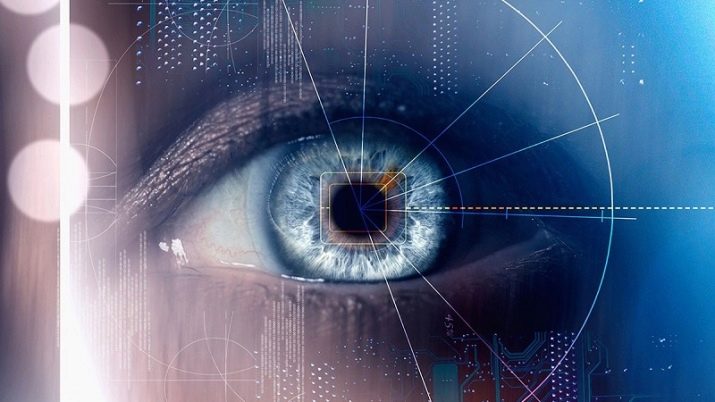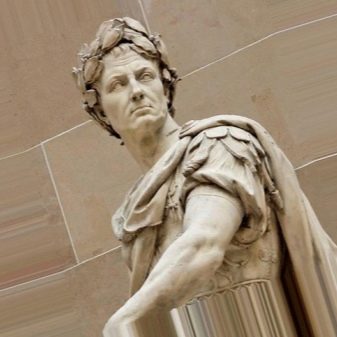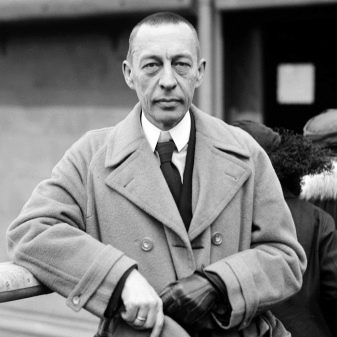Eidetic memory: what is it and how to develop it?

Life is much easier for people with a good memory. It is easy for them to complete various tasks and study at school. For example, it is enough to read a poem a couple of times and it will reliably remain in your memory. In the lesson, you just need to open the desired page and simply retell the text. Eidetic memory is needed for those people who, by the nature of their service, must memorize a large amount of information.
Such a professional will definitely not be left without work. Therefore, we can conclude that excellent memory is a huge advantage.
What it is?
People who have a memory associated with remembering images are considered talented. However, some experts believe that such talent is more a deviation than an advantage. To understand this issue, we will find out what the word eidetic means. This term appeared in our language from the Greek word meaning "appearance" or "image". That is why memory that is able to reproduce objects visually is called eidetic.

To be precise, then this memory allows a person to memorize and hold certain images in consciousness. These can be pictures, numbers or words. When such images come to a person's mind, he sees them as if he was returned to the past and a colorful page was opened in front of him. The eidetic can easily describe everything he saw to the smallest detail or rewrite the text without missing a single word.
And that is not all. During memories, sensory modalities are triggered. They connect tactile, olfactory, motor, or gustatory memories to the picture. The individual keeps these things in his mind for a long time (several years may pass) and recreates if necessary. And the experiences will still be quite vivid and detailed.
The described memory is characterized by the detailing of visual images. To understand this, you need to give an example. Many people watched the movie "Avatar". However, few people remember what the protagonist was wearing when he stepped off the intergalactic ship. It is also difficult to remember the various little things that were present in the frame. A a person endowed with a photographic memory can easily remember all the details. Even describe the colors and sounds made.
After reading some information, have you already wanted to become an eidetic? Then start training your memory, as it will take a lot of time. You may have to spend your whole life on this.
Although there are also people who received this gift at birth. They can easily be classified as born geniuses. This is the difference between a hardworking person and someone who was gifted from the beginning.

In psychology, it is customary to rely on characteristics. Therefore, we will consider them in more detail, and at the same time we will find out what photographic memory relies on and how it works.
- Visualization is turned on first. As if by chance, images appear, and secondary components are already behind them. How it works? A person with a photographic memory perceives a picture, and then all the other details that follow are imprinted in his imagination. For example, if a person saw an accident, then at first he remembered the picture as a whole, and then the numbers of the cars, colors, sounds, etc. were printed in the memory.
- Then comes the detailing of images. A person recalls such details that an ordinary man in the street will surely overlook. For example, he can remember and describe the victim's clothing and even the color and shape of the buttons that were sewn onto the victim's jacket. One gets the impression that the eidetic looks at the picture and gradually describes it.
- A unique person does not try to remember events that have strongly attracted attention. They are deposited in his mind as if by chance, regardless of his wishes. This is called involuntary retention. The exception to this is people who specifically develop photographic memory.
- The eidetic can recall the necessary events with ease, since it has involuntary reproduction.
- Those born with a photographic memory can memorize very large amounts of information. They quote poems, know different details of past events, and even speak different languages.
- A person with an ordinary memory often cannot remember the details. And the eidetic will remember everything to the smallest detail, even if 20 or 30 years pass.
In order for an eidetic to remember something, he needs to be strongly interested in any event. And if his attention is distracted, then the eidetic, like an ordinary person, will not remember the features of the events that took place.

Peculiarities
It is believed that eidetic memory is inherent in younger students. As you grow older, this memory is replaced by causal thinking. but if desired, any person can restore memory, since his brain is involved only 3-5%. Therefore, it is necessary to develop your memory throughout your life and achieve results. This will make it flawless, since a person with a photographic memory has an intellectual superiority over other people.
And keep in mind that learning ability in most cases depends on good memory. If a person is able to memorize a large amount of information, he becomes in demand in the labor market. It is easier for young people to learn and try themselves in various professions with this mental ability.
And nevertheless, eidetic memory still has some disadvantages. People with unusual abilities are often unable to develop abilities in other areas. First of all, physical development suffers. In addition, the brain of a normal person deliberately erases unpleasant memories. In life, it is these memories that usually cause mental pain.
Nature has foreseen everything. A person should not dwell on his torment for a long time. If he is under constant stress, he may lose his mind.

If an individual has an eidetic memory, then the function of "erasing" images of unpleasant events is abolished. And then it becomes difficult for a gifted individual to constantly keep his psycho-emotional state in the norm. That's why psychiatrists are more than restrained in cases of congenital eidetic memory... When it comes to a clear bias, then this option is considered a clear deviation. Why is this happening?
Because the amount of memory required to memorize pictures takes up separate parts of the brain. This process changes the biochemical and physiological structures of cells. Thus, in one part of the brain, productivity is inhibited, while in another it develops strongly. And this is considered a deviation from the norm. Specialist M.P. Kononova, when studying this issue, determined that children with innate eidetic memory suffered from certain deviations. They were dominated by hallucinations and even epileptic seizures.
Nevertheless, experts recommend developing eidetic memory. Psychologists have even developed many techniques that accompany the development of such abilities. When memory develops gradually, this process simply cannot contain any negative factors.

Degrees
It is necessary to understand that absolutely identical people with the same characters and abilities simply do not exist. Therefore, among the eidetics there are those whose abilities are developed quite strongly, and there are those whose abilities are less clearly expressed. As a result of this fact, experts have divided the severity of photographic memory into degrees. There are only 5 of them.
- For some capable individuals, in order to reproduce something, you need to fix the image in memory.
- Others may see very faint visuals.
- More in-depth eidetism involves the visualization of images that have a character of medium clarity. At the same time, in this process, there is a manifestation of images of some particular details.
- The penultimate degree may allow the memorization of clear and fundamental points in pictures. In this variant, some details of sensory modalities are already observed.
- And the most persistent memory can reproduce quite colorful and clear details of eidetic images. At the same time, modalities manifest themselves clearly and clearly.
As it has already become clear, the last fifth degree is the most pronounced, therefore it is divided into 2 types.
- If a person can control and reproduce the necessary memories at will, memory refers to B-type.
- Persistent pictures. They have a flamboyant and intrusive nature. Eidetic images in this case border on hallucinations. A person cannot always manage these manifestations. it T-type.
Since people with super-phenomenal memory are classified as unusual, they can be identified among the crowd by their facial expressions and some movements that are not characteristic of ordinary people.


How to develop?
For those interested in developing a good memory, you can start developing it. And here you will need to apply all your abilities, they are different for each person. Therefore, start training according to the following methods.
Aivazovsky's method
Nothing can be said for sure, but it is said that the artist was endowed with a photographic memory. This fact is not surprising. The profession of an artist involves memorizing various beautiful pictures. They need to be clearly printed in the head so that they can then be transferred to the canvas.Perhaps that is why experts have long been recommending the eidetic memory development method of the same name.
The essence of this technique is as follows.
- It is necessary to define a thing or some kind of animate object (you can take, for example, an animal).
- Then it is good to take a closer look at it, observe its behavior or remember its outline.
- Then you need to close your eyes, disconnect from the outside world and try to reproduce in your mind the complete picture that you just observed. It should contain all the details (color, movement, general appearance, etc.).
- Until the object disappears from view, open your eyes and compare your picture with the original. If you missed something, then correct the mistakes and try to repeat the exercise.
- Do this exercise constantly until you see a complete coincidence of all, even the smallest details.
- When you reach a certain level, try to make the task harder.
There are other exercises for developing eidetic memory. Let's consider them in order.
- This exercise can be done without spending a lot of time.... For example, you go to a store. While you are walking, try to count the encountered houses, porches, and even windows. Remember the figure you get. When you return, count all the objects again. If their number matches, then you got a good result, and your memory will soon become perfect.
- How to work with text and quickly develop a photographic memory? Practice the following technique and you will be able to memorize any texts very quickly. In order to start classes, you need to print an A4 sheet with text. The text must be completely unknown. Read carefully and remember what is written. Then you need to ask your partner to add some logical words to this text and print the sheet again. After correcting the new textual performance, you need to re-read and find the newly added words.
- If you love entertaining games and activities, then read all the signs in reverse when walking down the street. You can buy a manual for the development of logic in children and solve various tasks. Pictures called "find 12 differences", etc. will also help in this matter.

Neurobics
This activity can be called gymnastics for the brain. Exercise that falls into this category not only helps develop photographic memory, but is also a preventative measure for Alzheimer's disease. They must be performed regularly by both adults and children. Consider the simplest and most productive exercises.
- When you go to work or to the store, try to get to the place using different routes. There should be several of them. Every time you go on a new road, carefully examine the objects around you in all details.
- Do you write with your left hand only? Start writing with your right hand. Also try brushing your teeth or holding a spoon with your unaccustomed hand during lunch.
- Look for texts, the subject of which is unusual for you, and you do not quite understand it. At the same time, try your best to grasp the very essence of the selected text.
- Every day you chat with friends or colleagues... Try to keep your speech under control in the conversation. This should be done as if you are writing an article or essay.
- If you are interested in developing your photographic memory, turn off the sound on your TV often and try to understand what is at stake. To test yourself, just watch the same program or movie on the Internet.
Even if you do not achieve great results, you still will not be in the red. Your memory, thanks to the exercises proven over the years, will definitely improve. And remember, it's never too late to learn.

Notable personalities with eidetic memory
It is not for nothing that history has captured some of the outstanding people who influenced its course. They all had phenomenal memories and were born and lived at different times. So, let's start listing geniuses.
- 26th President of the United States T. Roosevelt remembered as a peacemaker. In addition, he read 3 books every day and honed his memory.
- Inventor, extraordinary and mysterious person N. Tesla possessed a photographic memory. It is difficult to overestimate his contribution to science.
- Russian composer S. Rachmaninov could memorize notes at a very high speed. He played the most difficult pieces from memory.
- John Paul II learned 21 languages in his entire life and could speak 100 dialects.
- An American with a Phenomenal Memory Kim Peak I could remember almost 100% of the information I read and read 2 pages at once.
- The president Philippines Ferdinand Marcos effortlessly memorized complex texts and retelling them with ease.
- Phenomenal Roman general Julius Caesar knew every soldier by sight.
- American Meryl Henner remembers all the events from childhood to the smallest detail. She has an incredible amount of memory.
- Mary Elizabeth Bowser worked in intelligence and memorized all the information that she learned behind enemy lines.
- Napoleon Bonaparte - Emperor of France. He could develop various battle plans and had a phenomenal memory.










